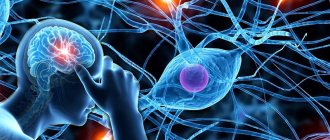Ketogenic
The main goal of such nutrition is the predominance of fat in the diet . This means that lipids make up at least 70% of daily calories.
At the same time, the consumption of carbohydrates is sharply limited. You should not eat more than 20–30 g per day. The amount of proteins remains unchanged. It is calculated for each person at the rate of 0.6 g per 1 kg of body weight.
The resulting ketone bodies circulate in the bloodstream and reach all tissues and organs. In the brain, they replace glucose and protect cells of the nervous system.
What is possible and what is not?
It is recommended to include the following foods in your diet:
- olive, sesame, coconut and avocado oil - add them to sauces and cook food with them;
- fish (salmon, mackerel, tuna). It contains omega-3 fatty acids, which have a beneficial effect on the nervous system;
- nuts (walnuts, almonds, pistachios). Contains monounsaturated lipids;
- pumpkin and sunflower seeds. They contain polyunsaturated fats, vitamins and minerals.
The following should not be included in the diet:
- sweets and baked goods;
- carbonated and alcoholic drinks;
- fast food;
- oils (sunflower, rapeseed, peanut);
- legumes
These products interfere with the breakdown of lipids and the subsequent formation of ketone bodies. In addition, fast carbohydrates negatively affect the intestinal microflora, which causes a surge in the immune response.
Approximate diet
Chicken with vegetables
Ingredients:
- chicken breast – 0.4 kg;
- zucchini – 1 pc.;
- eggplant – 2 pcs.;
- sweet pepper – 1 pc.;
- mayonnaise – 1 tbsp. l.
Instructions:
- Cut the breast into small pieces. Add salt, mayonnaise and spices to taste. Stir the mixture and leave it in the refrigerator for half an hour.
- Peel the zucchini and eggplants. Cut them into cubes. Grind the pepper.
- Preheat the pan. Add oil there.
- Place chicken pieces in a frying pan and fry them until half cooked (10 minutes over high heat).
- Add vegetables, salt the mixture. Simmer for about 20 minutes over medium heat.
Paste
Ingredients for pasta:
- egg – 4 pcs.;
- curd cheese – 150 g;
- flaxseed flour – 2 tbsp. l.;
- salt - to taste.
For the sauce:
- red fish – 0.5 kg;
- cream 20% – 200 ml;
- salt, pepper, garlic - to taste.
Instructions:
- Beat eggs with cottage cheese and salt until smooth.
- Add flour to it and mix.
- Let the dough sit for about 3 minutes.
- Cover a baking sheet with parchment paper, then place the mixture there. It must be leveled to 5 mm thick.
- Place a baking sheet in an oven preheated to 150⁰ for 12 minutes.
- After the time has passed, remove the product and let it cool.
- For the sauce, chop the fish.
- Grease the pan with olive oil. Fry the fish over high heat for about 3-5 minutes.
- Pour in cream and bring to a boil. Reduce heat.
- Salt, pepper, add garlic. Let simmer for 10 minutes.
Buns
Required ingredients:
- egg – 3 pcs.;
- cream cheese – 120 g;
- soda – 0.5 tsp;
- salt - a pinch;
- flaxseed flour – 1 tbsp. l.
Instructions:
- Separate the yolks from the whites. Beat the egg whites and salt with a mixer until you get an airy, creamy texture.
- Mix the yolks with cheese. Add flour, baking powder. Mix the mixture thoroughly.
- Gently mix the whites with the yolks. The mass should be airy.
- Use a spoon to form circles of dough onto a baking sheet.
- Bake for about 25 minutes at a temperature of 150⁰. The buns should be browned.
- Remove the product from the oven.
What kind of disease
Multiple sclerosis affects the central nervous system (CNS), but it is not yet possible to know exactly why it occurs. MS is considered an immune-mediated disease in which the body's immune system mistakenly attacks the myelin in the central nervous system.
In the central nervous system, nerve fibers are surrounded by a myelin sheath that protects them. Myelin also helps nerves conduct electrical signals quickly and efficiently. In multiple sclerosis, the myelin sheath disappears in several areas, leaving scars or scar tissue.
Areas where myelin is missing are called plaques or lesions. As the condition worsens, nerve fibers may be destroyed. As a result, electrical impulses from the brain are no longer able to travel to the target nerve.
The process of development of multiple sclerosis:
- The immune system begins to attack myelin, a substance that protects the surface of nerve fibers.
- As a result of damage, scar tissue or sclerosis is formed (this is where the name of the disease comes from).
- When the myelin sheath on nerve fibers is damaged, the nerve impulses that travel from the brain or spinal cord to the muscles and organs are distorted. This leads to symptoms of MS (tremor, loss of coordination, loss of consciousness, gait disturbance).
Scientists believe that those people who have a genetic predisposition to the disease combined with several environmental factors are susceptible to multiple sclerosis.
Case studies
Daily diet is more important in multiple sclerosis than previously thought. A healthy menu with plenty of fruits, vegetables, legumes, and whole grains leads to symptom relief.
This connection was demonstrated in a US study published online in the journal American Academy of Neurology. The study included 6,989 patients with all types of MS who completed the NARCOS registry with their dietary habits.
They were then divided into 5 groups. The group with the healthiest diet was 20% less likely to experience serious physical complications than the group with the least healthy diet.
The severity of the disability is assessed depending on the need to provide any support to the patient (stick, wheelchair) to walk a distance of about 8 m.
Patients with the healthiest eating patterns also had a 20% lower rate of major depression.
Participants in the healthiest diet group consumed an average of 1.7 servings of whole grain cereals, while those in the least healthy diet group consumed just 0.3 servings per day. For vegetables, fruits, and legumes, consumption in both groups was 3.3 servings and 1.7 servings per day, respectively.
Patients with MS who follow healthy lifestyle rules (healthy weight, physical activity, smoking cessation) have a 50% lower likelihood of serious depression, 30% less fatigue, and 40% less pain. Studies have also shown that a healthy diet reduces memory and cognitive problems in general by 1/3.
The results were confirmed by assessing factors that may influence the disorder, such as age and the period during which the person suffered from the disease.
The study also compared the effects of popular eating plans, such as the Ashton Embry diet, the Swank diet, Paleo and others, considered beneficial for patients with multiple sclerosis. Following them has been shown to reduce the risk of progressive lesions.
According to the study authors, the results cannot be considered predictive of future progression of MS symptoms. But they confirmed the connection between general lifestyle and the manifestations of multiple sclerosis.
Fluid intake
When following a diet for multiple sclerosis, remember that the daily amount of fluid you drink should be from 1.5 to 2 liters. It is advisable not to limit the patient’s intake of water and other drinks. The kidneys, which pass a large amount of medications through themselves, need to be cleansed.
- Is it possible to drink coffee if you have this disease? Coffee intake should be reduced or completely removed from the diet. If you have difficulty giving up coffee, you can drink one cup with breakfast.
- Morse for multiple sclerosis. Fruit juice and compote, without added sugar, perfectly quenches thirst and enriches the body with vitamins. Therefore, these drinks can replace the usual tea and coffee.
Causes
The etiology of multiple sclerosis is still unknown; scientists believe that several factors, interacting with each other, can cause the disease.
Experts are also studying infectious agents that may play a role in pathogenesis. Understanding what causes multiple sclerosis will speed up the process of finding better treatments and ultimately cure or even prevent the disease.
There are several factors that can trigger the disease:
- immunological;
- environmental factors;
- infectious;
- genetic.
Immunological factors
In multiple sclerosis, the myelin covering around nerve fibers in the central nervous system, as well as the nerve fibers themselves, are destroyed. Recent research has been able to identify the immune cells that escalate the attack, as well as the underlying factors that cause the cells to do so.
Research continues today. Scientists are trying to understand the disease process and explore what can slow down or stop the destruction of nerve fibers.
Environmental factors
It is known that multiple sclerosis is more common in areas of the globe located further from the equator. Scientists have concluded that those people who get a smaller dose of vitamin D get sick more often. It is known to enhance immune defense and help the body fight immune-modulated diseases, which include multiple sclerosis. Researchers in Australia are studying the link between vitamin D deficiency and MS.
Many scientific papers suggest that bad habits, especially smoking, increase the risk of MS. Tests have shown that smoking provokes faster progression of the disease and aggravates symptoms. If the patient immediately gets rid of the bad habit, this can slow down the further development of multiple sclerosis.
Infectious factors
Since childhood, a person has been exposed to attacks from numerous microbes and bacteria, which cause inflammatory processes in the body and can provoke the destruction of nerve fibers. Some scientists have concluded that perhaps the virus is one of the causes of the disease.
To confirm this theory, more than 10 viruses and bacteria were studied: measles, hepatitis virus, pneumonia, chlamydia. So far, no results have been found, but scientists continue to search for possible evidence of the involvement of viruses in the development of MS.
Genetic factors
Multiple sclerosis is not a hereditary disease, but if one of the first-degree relatives (parents) in the family had MS, this increases the chance of such a pathology appearing in the child.
Some scientists believe that multiple sclerosis can develop due to a genetic predisposition and a reaction to any environmental agent. This triggers an immune system response that attacks the myelin.
Volume of liquid drunk
It is known that most people with multiple sclerosis face such a delicate problem as urinary incontinence. The fact is that with this disease the transmission of nerve impulses from and to the brain slows down. Accordingly, impulses to the muscles involved in emptying the bladder are also distorted.
To avoid such an unpleasant symptom, some people limit the amount of liquid they drink. But you shouldn't do this. Each person should drink 1.5-2 liters of water per day; this is the basis of a healthy diet.
Caffeinated drinks have a diuretic effect. Therefore, you should limit your consumption of coffee and tea. Nutritionists recommend drinking no more than two cups of coffee per day.
Diet changes and treatment for multiple sclerosis
Diet is an important part of a person’s life and has a significant impact on his health. Scientific research shows that various diets have a positive effect on multiple sclerosis, slowing the progression of the disease. In this regard, nutritional correction is recommended for all patients.
Myelin is a protein-lipid complex that covers nerve fibers and ensures rapid transmission of impulses. In terms of the quantitative content of chemicals, myelin consists of 75% fat and 25% protein. In this regard, its condition, including multiple sclerosis, is influenced by a large number of nutrients supplied with food:
- Omega-3 polyunsaturated fatty acids that form the basis of the lipid part of myelin. In addition, the permeability of the membranes of neurons and other cells of the body is determined.
- Phospholipids are an integral part for the formation of nerve cell membranes and the myelin sheath. Scientists believe that phospholipids have antioxidant properties, blocking the formation of free radicals that can damage myelin.
- Vitamin A, which regulates intracellular metabolism processes.
- Vitamin E is a powerful antioxidant that blocks oxidative stress and reduces the severity of inflammatory changes.
- Vitamin D - affects the functioning of immune cells. It reduces their activity, thereby preventing the development and progression of autoimmune reactions in multiple sclerosis.
- Potassium, magnesium, selenium and other trace elements. Participate in the processes of cell growth and division, prevent oxidative stress, and promote the restoration of the myelin sheath.
The diet of patients with multiple sclerosis should include foods containing these substances. In this case, diet plays an additional therapeutic role, reducing the rate of progression of the pathology.
The role of nutrition and drinking in the development and treatment of MS
According to neurologists, the incidence of multiple sclerosis in the middle latitudes of Russia is higher, and as it approaches the equator it decreases. Factors influencing this effect are not only the amount of sunlight, but also nutrition.
The diet of MS patients should include omega-3 and -6 polyunsaturated fatty acids and vitamin D. From an epidemiological point of view, the disease is less common in the equator region; its prevalence is higher in areas with a high intake of saturated fat and a low percentage of long-chain polyunsaturated fatty acids in the diet. Territorial risk groups are countries with insufficient fish consumption, deficiency of sunlight, and therefore vitamin D3.
Ketogenic diet in treatment
Over the past 15-25 years, neurologists and psychiatrists have paid great attention to nutritional correction in patients with various diseases. The ketogenic diet was first used in patients with epilepsy. The diet is based on increasing fat intake while reducing the amount of carbohydrates in food. This leads to the fact that ketone bodies, being a product of lipid breakdown, become the main source of energy in the body.
In addition to epilepsy, the ketogenic diet is actively used in the treatment of multiple sclerosis and a number of other diseases of the nervous system: Alzheimer's disease, autism, etc. It is believed that the positive effect is associated with the formation of a large amount of beta-hydroxybutyric acid in the body. It is an important energy source for the brain, which improves its functional state. In addition, beta-hydroxybutyric acid has an anti-inflammatory effect and inhibits the destruction of myelin in nerve fibers.
Changing your diet
The ketogenic diet involves a major change in the body's metabolism. In this regard, it must be started in a medical institution under the supervision of a nutritionist and neurologist. The recommended proportion of BZHU (proteins-fats-carbohydrates) is 1:3:1 or 1:4:1. In the first days, general weakness, rapid physical and intellectual fatigue are possible.
Nutritionists highlight foods that should be avoided on a ketogenic diet:
- any sweet foods and drinks: sparkling water, confectionery, ice cream, juices, etc.;
- wheat, rice, pasta and other grain products;
- fresh and frozen fruits;
- root vegetables and legumes: potatoes, carrots, beans, peas, lentils, chickpeas;
- sauces and seasonings, as they contain large amounts of sugar;
- vegetable oils, including mayonnaise;
- alcohol, which negatively affects the processes of absorption and breakdown of fats.
Instead of these products, nutritionists gradually transfer the patient with multiple sclerosis to the following:
- red meat: beef, pork, horse meat, as well as chicken and rabbit;
- fatty fish: salmon, tuna and trout;
- cream and butter;
- any types of cheese containing 50% or more fat in their composition;
- seeds and nuts: sunflower seeds, walnuts, almonds, cashews, Brazil nuts, etc.;
- coconut, olive or avocado oil;
- vegetables containing small amounts of carbohydrates: cucumbers, tomatoes, red and green peppers, onions;
- simple spices: ground pepper, salt, etc.
The predominance of these products in the diet causes an increase in the amount of ketones in the blood and the development of ketoacidosis. The latter has a positive effect on brain nutrition and inhibits inflammatory changes in nerve fibers.
Diet
In each type of diet, there is an approximate menu for each day, based on the specified principles. On a ketogenic diet, your diet might look like this:
The diet should be changed regularly, using the list of foods allowed for multiple sclerosis. Weakness in the first days of the ketogenic diet must be “endured”, as it is associated with a sharp decrease in the amount of carbohydrates consumed and a restructuring of metabolism.
Is it possible to drink alcohol
Studies examining whether alcohol can be drunk if you have multiple sclerosis have found no harmful effects (in small quantities) on patients.
Red wine, which contains a high percentage of antioxidants, is usually recommended. Alcohol (at least 2 days a week - no alcohol):
- beer: max. 1-2 glasses per day;
- wine (preferably red, it has less sugar and more resveratrol): max. 200 ml per day;
- strong alcohol (best avoided): max. 20 ml per day.
Other Diet Recommendations to Help with MS
In addition to the dietary recommendations above, people with multiple sclerosis may want to consider the following tips to help manage their symptoms.
- Make sure you eat enough food . Not eating enough calories can cause fatigue.
- Prepare food in advance . If you have time, preparing meals ahead of time will help you save energy later. If you are often tired, this may be especially helpful.
- Remodel your kitchen . Place food, dishes and other equipment in areas that are easy for you to clean. This will help you save energy.
- Try "ready-to-eat" foods . Buying pre-cut fruits and vegetables can shave a few minutes off your prep time and make the preparation process easier.
- Make thicker drinks . If you have difficulty swallowing, making thicker drinks, such as a healthy smoothie, will make it easier for you to swallow.
- Soft foods may help . If a lot of chewing makes you tired, try choosing softer foods, such as baked fish, bananas, avocados and cooked vegetables.
- Limit your consumption of crumbly foods . If you have difficulty swallowing or often choke on food, consider limiting crumbly foods such as toast and crackers.
- Ask for help . Even if you don't like asking for help, helping other family members with small tasks like cooking, cleaning, or just setting the table can help reduce your fatigue.
- Stay physically active . Although exercise can make a person with MS feel tired, it is especially important for managing weight and staying healthy. Physical activity is also important to prevent osteoporosis, which is more common in people with MS.
If you have other problems related to multiple sclerosis not discussed above, it is important to notify your doctor. He or she can make personalized recommendations to help you better manage your symptoms.
Conclusion:
The tips listed above can help improve your quality of life with MS by helping you maintain a healthy weight and manage symptoms such as fatigue and problems swallowing.
Foods to Avoid
Although an MS-friendly diet allows you to eat a variety of healthy and delicious foods, there are still some food groups that you should limit to help manage your MS symptoms.
Most of these foods are associated with chronic inflammation. These include processed meats, refined carbohydrates, trans fats, and sugar-sweetened drinks, to name a few (, ,).
Here is a list of foods to avoid if you have MS:
- Processed meats : such as sausages, bacon, canned meats, and salted, smoked or cured meats.
- Refined carbohydrates : such as white bread, pasta, cookies and flour tortillas.
- Fried foods : such as french fries, fried chicken, mozzarella sticks and donuts.
- Junk food : such as fast food, potato chips, processed foods and frozen meals.
- Trans fats : such as margarine, shortening and partially hydrogenated vegetable oils.
- Sugar-sweetened drinks : energy drinks, sports drinks, sodas, and sweet tea.
- Alcohol : Limit all alcoholic beverages if possible.
As mentioned above, some people with multiple sclerosis may have celiac disease. If you have celiac disease, try to avoid all gluten-based foods, such as those containing wheat, barley and rye.
Conclusion:
An MS-friendly diet is similar to a general healthy diet. She limits her intake of unhealthy foods such as processed meats, refined carbohydrates, soda and trans fats. These foods do not help manage the symptoms of multiple sclerosis and may make inflammation worse.
Nutrition for multiple sclerosis: general rules
A properly formulated diet for patients with multiple sclerosis will increase the body's resistance to adverse external influences that indirectly affect the disease. Like a healthy person, a patient with MS is recommended to adhere to the general principles of a healthy lifestyle.
Nutrition for MS should be energetically balanced, calorie intake should correspond to energy output. A healthy diet is varied and contains:
- fruits;
- vegetables;
- fiber;
- whole grain;
- legumes;
- nuts;
- seeds;
- fish;
- quality red and white meat;
- dairy products.
It is advisable to minimize the consumption of simple sugars, white flour, salt, cholesterol, and fats in general.
An important part of the diet for MS is maintaining a regular drinking regimen. This is partly because some patients with multiple sclerosis are prone to urinary tract infections.
Dietary supplements are not recommended for everyone because... there are no studies confirming a positive effect when taking them. Following healthy eating principles also includes limiting the consumption of alcoholic beverages.
As a healthy alternative to dietary supplements, it is better to invest in quality food products.
Diet modification by Terry Waltz
Terry Waltz is a physician and nutritionist who focuses on the treatment of multiple sclerosis using non-traditional methods, including nutrition. She came to such treatment approaches after she herself was diagnosed with the disease, and medications did not lead to a positive effect. While studying the effect of food on the course of the disease, she noted that when following the paleo diet, her condition improved. In addition, the Paleolithic diet made it possible to abandon the consumption of large amounts of dietary supplements with vitamins and microelements, since they are all contained in natural products.
The main differences between the Terry Waltz diet and the standard Paleo diet are as follows:
- The amount of vegetables and fruits consumed is precisely measured and should be equal to 9 cups per day. One cup – 200-250 ml. With less consumption, there is a deficiency of vitamins in the body, which develops gradually and worsens the prognosis for the patient.
- Gluten, eggs and dairy products are prohibited. All of them, according to Waltz, lead to activation of the immune system, which is unacceptable in multiple sclerosis.
- The use of synthetic sweeteners is prohibited. It is acceptable to use 1 tsp. a day of natural honey, stevia or raw cane sugar. Simple sugars reduce insulin sensitivity, creating the preconditions for the development of metabolic syndrome, characterized by systemic inflammation.
- The diet has 3 levels, each with a different list of restrictions. All patients are recommended to start with the basic stage, which has a small list of prohibited foods, thereby ensuring an easy transition to this diet. Gradually the diet becomes stricter.
The effectiveness of the Terry Waltz diet has not been clinically proven, however, there are a large number of people's reviews, including written books, about its benefits for multiple sclerosis.
Ashton Embry Diet
The Ashton Embry diet is most popular among neurologists. Diet changes are based on a large amount of scientific research. It is known that a number of products have a structure similar to myelin, which can cause the development of an autoimmune reaction to this nerve fiber protein. In this regard, the diet is based on limiting the consumption of legumes, dairy products, gluten-containing foods and sweets.
Myelin primarily consists of fatty acids, therefore, the amount of saturated and unsaturated fats in the diet is reduced. For example, lean beef, olive and other types of oil are allowed only once a week. Ashton Embry believed that a person needs to adhere to the principles of a gluten-free diet - eliminate all grains that contain gluten, which is responsible for a number of autoimmune pathologies.
Chicken, turkey and rabbit are not limited to. It is important to remove the skin before cooking. The amount of fish (salmon, mackerel) in the diet is increased. The restrictions do not apply to vegetables and fruits.
Due to the restriction of a number of foods in the diet, nutritionists recommend additional use of vitamin and mineral supplements. The deficiency of vitamin E, C, A, B12, as well as calcium, copper, magnesium, and selenium should be compensated. In addition, in the first weeks after switching to the Ashton Embry diet, you can take dietary supplements - adaptogens, which can improve performance and well-being.
Alcoholic drinks are definitely excluded. Ethyl alcohol not only leads to changes in proteins, but also contributes to the development and maintenance of inflammatory processes. The restriction also applies to alcohol with low ethanol content.
Using the Paleo Diet
The Paleolithic, or paleo diet, involves a high level of consumption of meat and plant foods. This nutrition theory is based on attempts to follow the diet of the Paleolithic inhabitants, for whom many modern pathologies, including multiple sclerosis, were not typical.
Products that should form the basis of your diet:
- any type of meat, it should be purchased from farmers who provide animals with free range and herbal nutrition (adding feed and antibiotics to their food negatively affects the biological properties of meat);
- fish, both fatty varieties (salmon, sturgeon) and non-fatty ones (hake, flounder, etc.);
- eggs with limiting the consumption of yolks to 2 per day;
- nuts and seeds without prior roasting (it is important to remember that peanuts are a legume, despite their widespread classification as nuts, they do not have the necessary ratio of unsaturated to saturated fatty acids, and therefore are excluded from food);
- fresh fruits, berries, vegetables, herbs;
- olive, flaxseed, coconut oil, as well as walnut or avocado oil.
In addition to recommended foods, there are several types of prohibited foods:
- cereals containing large amounts of simple carbohydrates (high consumption of products based on them can cause the development of insulin resistance, obesity and other metabolic disorders), restrictions also affect unprocessed cereals;
- legumes, as they contain substances that negatively affect metabolism in the body: lectin, inhibitors of the absorption of vitamins and microelements;
- milk and products based on it are prohibited due to their high lactose content (milk sugar is a product not typical for humans, which is due to the recent historical development of agriculture and the lack of adaptation of the human gastrointestinal tract to its consumption; similar restrictions apply to casein - the main protein contained in milk; cow's milk can be replaced with coconut or almond milk);
- foods rich in starch: potatoes, sweet potatoes and yams - they cause a sharp increase in the amount of glucose in the blood, which leads to the development of insulin resistance;
- sugar in confectionery products, store-bought juices, carbonated drinks, etc. (a large amount of sugar in the diet is a risk factor for the development of diabetes mellitus and metabolic syndrome, which are characterized by increased inflammatory changes in the body);
- salt.
These changes in diet lead to improved functioning of the digestive system, endocrine organs and immunity. At the same time, a decrease in the severity of inflammatory processes and an improvement in the prognosis for multiple sclerosis are observed in the body.
This is interesting
There are few studies looking at the specific effects of diet on multiple sclerosis. Therefore, the existing conclusions are either ambiguous or not reconfirmed. For example, studies have been conducted on omega-3 and -6 fatty acids. Initial results were promising, but ultimately the beneficial effects of these substances were not demonstrated. Research on vitamin D is more positive: it accumulates in the skin when exposed to sunlight (MS is more common in relatively cold countries). Vitamin D deficiency is also associated with more pronounced manifestations of the disease.
Although there is no food regimen that works for MS, patients should still be careful when eating. A healthy diet should not contain too much fat; on the contrary, the body needs enough fiber. These changes will help your heart and have a positive effect on your overall health.
Avoid extreme diets that are not supported by research. When you decide to change your diet, make sure you get the information from a reliable source. A proper diet should contain all the necessary nutrients in sufficient quantities. Before making any dietary changes, consult your doctor.










